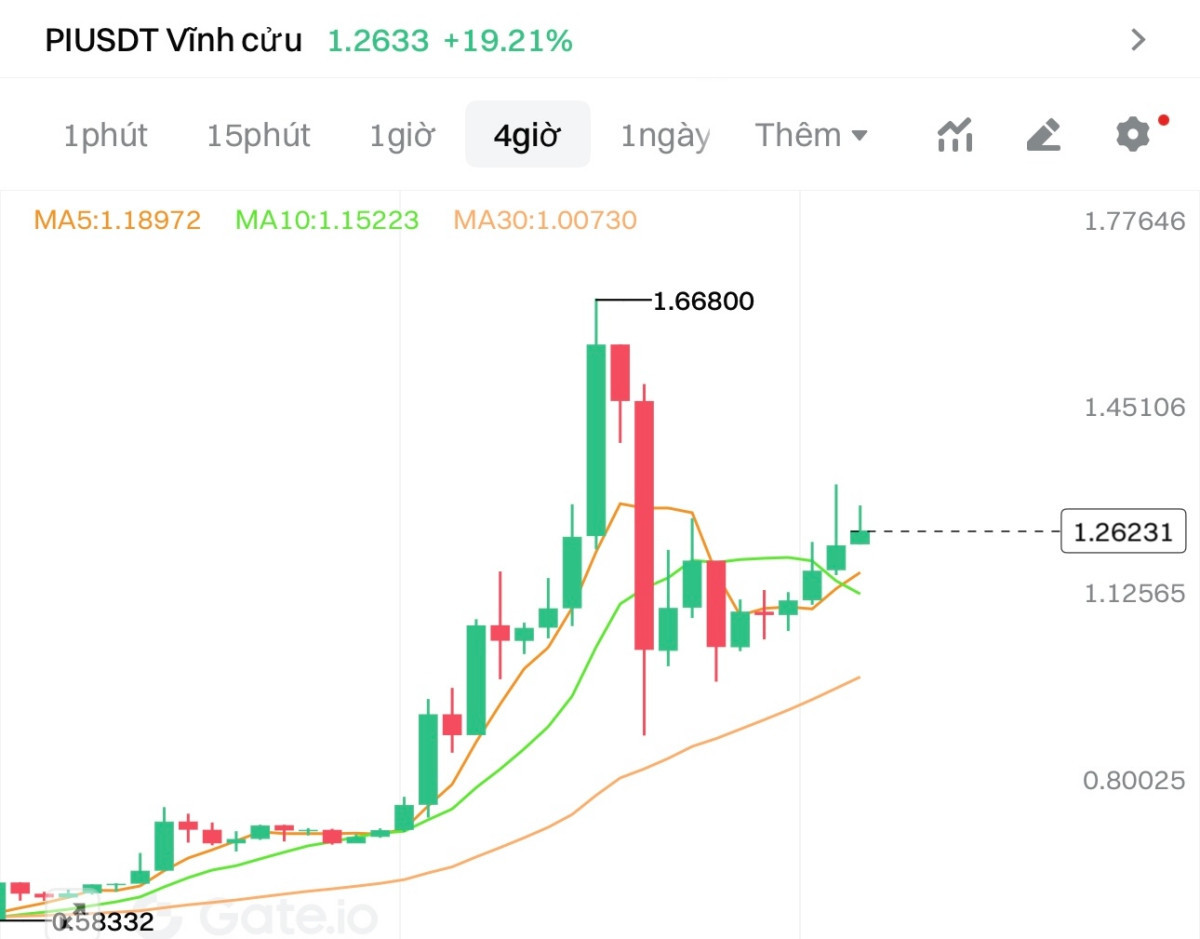The price of Pi coin surged to nearly $1.7 on May 12 before plunging back to $1 just hours later, leaving many investors with heavy losses. Experts warn of potential price manipulation and artificial inflation within the Pi Network.
“Signs of price manipulation”

On the afternoon of May 12, Pi suddenly jumped from $0.70 to $1.68. Yet by the evening, it dropped sharply to $1 and is now fluctuating between $1 and $1.30.
Nguyen Ha Minh Thong, founder of Cabo Capital in Ho Chi Minh City, said the extreme volatility in Pi's price raises serious concerns over market stability and manipulation.
“This isn’t the first time Pi has crashed like this,” Thong noted. “At its listing, the price fell from $2.2 to $0.6 within 24 hours. In April, it dropped from $2.99 to $0.40. These crashes have caused major losses for many investors.”
Thong emphasized that on May 12 alone, trading volume reached nearly $2 billion. “This opens up the possibility that whales or exchanges are manipulating Pi’s price to trigger FOMO buying, only to dump it later and crash the price.”
The project has a maximum supply of 100 billion Pi. With 1.4–1.5 billion tokens expected to be unlocked over the next 12 months, downward pressure on the price is likely unless demand rises proportionately. Currently, about 7 billion Pi are in circulation, but the Pi Core Team reportedly holds over 35 billion, raising concerns about centralized control and the risk of large-scale sell-offs.
Free entry, hidden risks
Thong acknowledged that Pi Network offers a unique opportunity to earn cryptocurrency for free, but noted growing concerns around withdrawal restrictions, extreme price swings, lack of transparency, and scam risks.
“The recent price surge is a positive signal, but it doesn’t mask the project’s underlying issues,” he said. “Users must stay alert and avoid getting caught up in FOMO. Always prioritize financial safety and data privacy before investing time, money, or personal information into Pi Network.”
Social media and online communities devoted to Pi Network have been flooded with posts hyping the coin and misleading users. During price spikes, many posts falsely claim that Pi will continue rising, encouraging panic buying. When the price drops, others use flawed logic to reassure investors - arguing that buying at $0.70 and selling at $1 still means a profit - or spread unverified rumors about upcoming Binance listings or imminent appearances by Pi’s founders.
Such content has led many to purchase Pi at inflated prices, resulting in significant financial losses.
Experts in crypto investment caution that these promotional tactics are dangerous, especially in communities where most Pi miners have limited technical knowledge. “They’re led to believe that Pi’s value will skyrocket, so they invest blindly,” one expert said.
Currently, Vietnam lacks a legal framework to regulate cryptocurrency transactions. The State Bank of Vietnam has repeatedly warned against owning, buying, or using cryptocurrencies like Bitcoin, stating clearly that such activities are not protected by law.
Le Minh